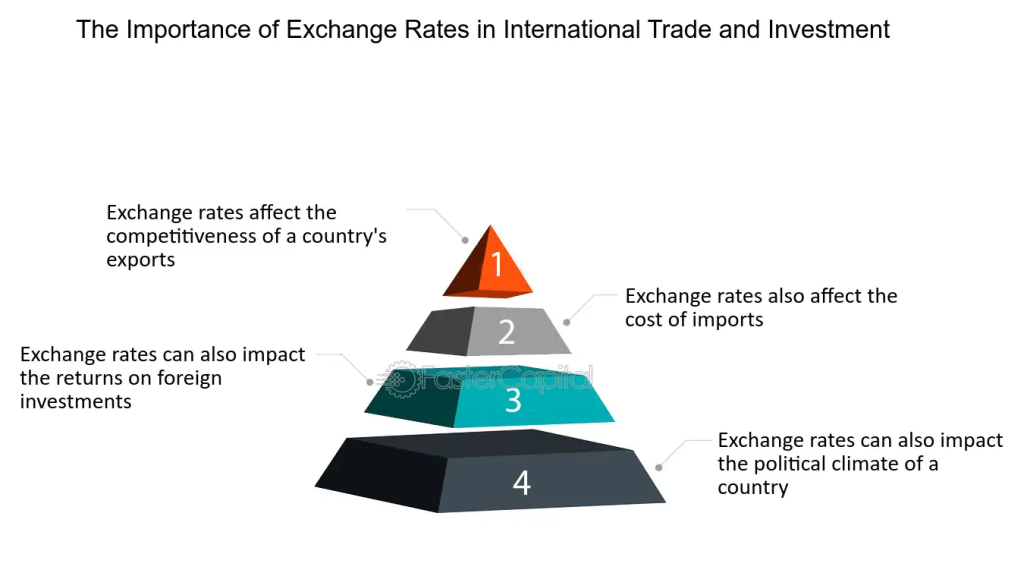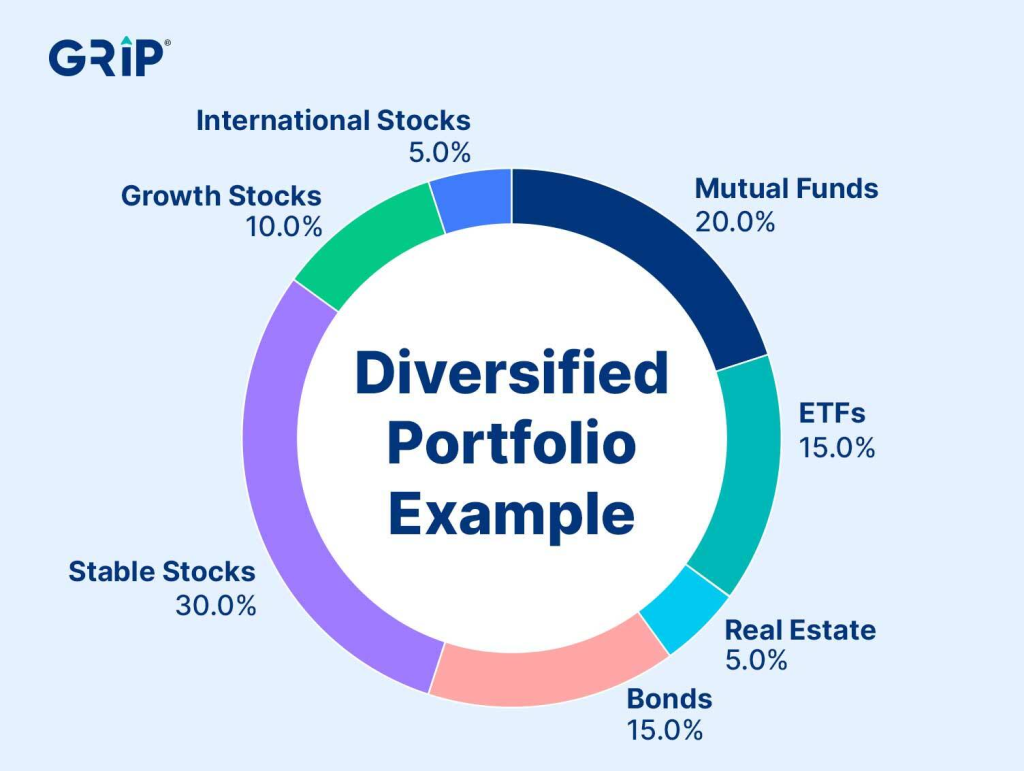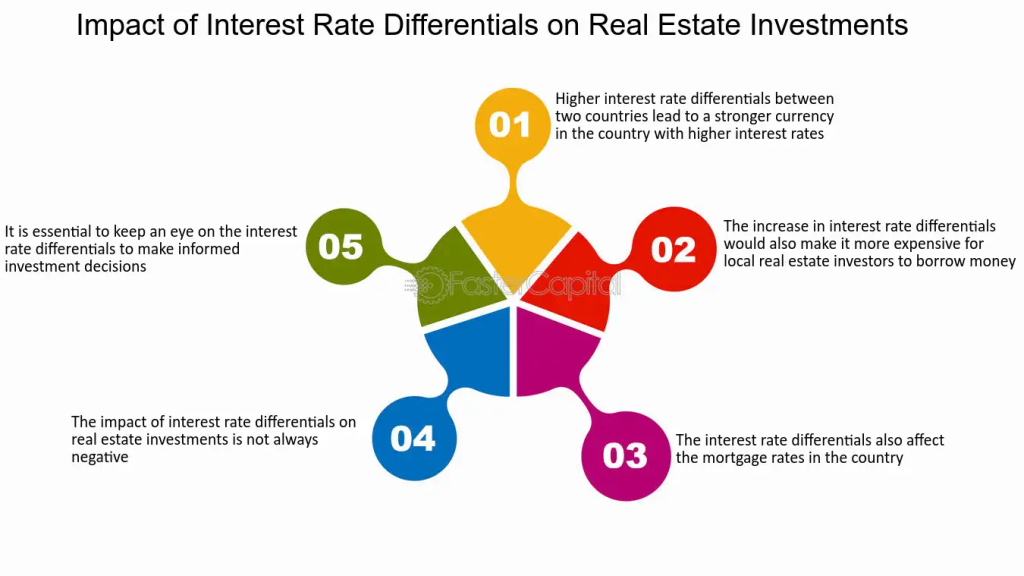ആഗോളം: പ്രധാന നിക്ഷേപ ആശയങ്ങൾ
പാഠ പഠന ലക്ഷ്യങ്ങൾ:
ആമുഖം:
This section focuses on understanding key investment concepts, including income from investments, types of investments, the relationship between risk and return, and how economic factors influence investment prices. By exploring these concepts, users can gain a comprehensive view of how different investments work, assess potential returns, and make informed financial decisions.
- Understand Income from Investments: Learn about the different ways investments generate income, including capital gains from selling assets at a profit and dividends/interest from shares or bonds. This helps users recognize the potential returns from various assets and how these returns are taxed in different countries.
- Identify Types of Investments and Their Purposes: Explore various investment options like stocks, bonds, mutual funds/ETFs, real estate, commodities, കൂടാതെ crypto-assets. Users will understand how each type serves a specific financial purpose, from wealth growth വരെ income generation ഒപ്പം inflation protection.
- Comprehend the Risk-Return Relationship: Understand that higher returns come with higher risks, while safer investments offer lower returns. This knowledge helps users match their റിസ്ക് ടോളറൻസ് with suitable investments, balancing growth and safety based on their financial goals and investment horizon.
- Assess Economic Influences on Investments: Learn how factors like interest rates, inflation, currency exchange rates, കൂടാതെ economic growth impact the prices and returns of different investments. This understanding equips users to make more strategic investment decisions in varying economic conditions.
A. Understanding Income from Investments
Investments generate income in different ways depending on the type of asset. There are two primary types of income from investments: capital gains ഒപ്പം dividends/interest.
- മൂലധന നേട്ടങ്ങൾ: This occurs when the value of an asset increases and the investor sells it for a profit. For example, if someone buys a stock for €50 and sells it for €70, the €20 difference is a capital gain.
- Dividends and interest: ലാഭവിഹിതം are payments made by a company to its shareholders, typically from profits. Interest is income earned from fixed-income investments like bonds. For example, a government bond paying a 5% interest rate annually will provide the investor with steady income. In the Eurozone, bond interest is influenced by the European Central Bank (ECB) rates, which directly impact returns on government bonds.
It is essential to understand that income from investments is subject to taxation, which varies by country. For instance, in some European countries, capital gains taxes and dividend taxes can be significant, affecting the net return on investments.

ചിത്രം: Summary of the Main Components of Total Return
വിവരണം:
The figure outlines three main components of total return: Capital Gains, Dividends, and Interest Income. It explains how each component contributes to overall investment returns, including definitions, roles in total return, factors affecting them, and different types. For instance, capital gains focus on growth potential, dividends represent income from ownership, and interest income derives from fixed-income investments.
പ്രധാന കാര്യങ്ങൾ:
- മൂലധന നേട്ടങ്ങൾ reflect the increase in an investment’s value over time, driven by market conditions and investor sentiment.
- ലാഭവിഹിതം provide a regular income stream from a company to its shareholders, based on its financial health.
- Interest income is earned by lending money or investing in interest-bearing assets, impacted by interest rates and credit quality.
- Each component has a unique role in assessing growth, income, or fixed-income performance.
വിവരങ്ങളുടെ പ്രയോഗം:
Understanding the components of total return helps investors diversify and maximize returns based on their സാമ്പത്തിക ലക്ഷ്യങ്ങൾ. By evaluating each element, investors can make informed decisions about growth potential, income generation, കൂടാതെ fixed-income investment strategies.
B. Types of Investments and Their Purpose
There are many types of investments, each with different purposes and characteristics. These include:
- Stocks (Equities): Stocks represent ownership in a company, and the purpose of investing in stocks is to achieve capital appreciation and, sometimes, dividend income. Stocks tend to have higher risk but also higher potential returns.
- Bonds (Fixed-Income Investments): Bonds are loans made to companies or governments, with investors earning interest over time. Bonds are generally considered safer than stocks and are often used to provide stability in a portfolio.
- Mutual Funds/ETFs: These are pooled investment products that allow individuals to invest in a diversified portfolio of stocks, bonds, or other securities. They are ideal for investors seeking വൈവിധ്യവൽക്കരണം without managing individual assets.
- റിയൽ എസ്റ്റേറ്റ്: Investing in property provides opportunities for both മൂലധന വിലമതിപ്പ് ഒപ്പം rental income. Real estate can be less liquid than other investments but offers stability and long-term growth potential.
- ചരക്കുകൾ: Investing in materials like gold, oil, അല്ലെങ്കിൽ agricultural products can offer protection against inflation, as these assets often retain value during economic downturns.
- Crypto-assets: Though newer and more volatile, cryptocurrencies like Bitcoin are becoming popular investment choices. They carry higher risk due to their unregulated nature but can offer high potential returns for risk-tolerant investors.
Each type of investment serves different goals, whether it’s wealth preservation, growth, income, or hedging against inflation.
ചിത്രം: Diversified Portfolio Example
വിവരണം:
The figure illustrates an example of a diversified investment portfolio, showing how different asset classes can be allocated to spread risk. It includes allocations to Stable Stocks (30%), Mutual Funds (20%), Bonds (15%), ETFs (15%), Growth Stocks (10%), International Stocks (5%), and Real Estate (5%). Diversification across various asset types helps mitigate risk by ensuring that the portfolio is not overly dependent on any single investment.
പ്രധാന കാര്യങ്ങൾ:
- വൈവിധ്യവൽക്കരണം reduces risk by spreading investments across different asset types.
- Stable stocks make up the largest portion of this example portfolio, providing a strong foundation.
- Mutual funds, bonds, and ETFs are significant components, offering varied exposure.
- Growth and international stocks add opportunities for higher returns, while റിയൽ എസ്റ്റേറ്റ് contributes to long-term stability.
വിവരങ്ങളുടെ പ്രയോഗം:
By diversifying their portfolio, investors can reduce the impact of market volatility on their overall investments. A നല്ല സന്തുലിത പോർട്ട്ഫോളിയോ ensures that no single asset class dominates, which helps in achieving more consistent returns. This approach is useful for investors looking to build a resilient investment strategy that can withstand different market conditions.
C. Investment Risk and Return
One of the key principles in investing is the relationship between risk and return. In general, higher potential returns come with higher risks, while lower-risk investments tend to offer more modest returns. For example:
- High risk, high return: Stocks, especially in emerging markets or tech startups, offer the potential for significant returns, but they also come with the risk of substantial losses.
- Low risk, low return: Bonds or government securities provide safer, more stable returns but are unlikely to yield the same level of capital appreciation as stocks.
The concept of റിസ്ക് ടോളറൻസ് is crucial here. Investors need to assess how much risk they are comfortable with based on their investment horizon (the time they plan to hold the investment) and financial goals. For example, younger investors may have a longer horizon and be willing to accept more risk, while retirees may prefer low-risk investments that provide stable income.
Portfolio diversification helps to balance risk and return by spreading investments across different asset classes. A well-diversified portfolio reduces the overall risk because various asset classes often react differently to the same market conditions.

Figure: Risk Return Graph
വിവരണം:
The figure displays a risk-return graph that categorizes various investment funds based on their risk level (x-axis) and their compound annual growth rate (CAGR) returns (y-axis). The graph shows different types of Quantum funds ranging from low-risk, low-return funds like the Quantum Liquid Fund to high-risk, high-return funds such as the Quantum Equity Fund of Funds. This helps illustrate how different investments can be compared in terms of the balance between risk and return.
പ്രധാന കാര്യങ്ങൾ:
- Low-risk funds tend to have lower returns, such as the Quantum Liquid Fund ഒപ്പം Quantum Dynamic Bond Fund.
- High-risk funds like the Quantum Equity Fund of Funds ഒപ്പം Quantum Nifty 50 ETF offer potentially higher returns but come with increased risk.
- Moderate-risk funds provide a balance, like the Quantum Multi Asset Fund of Funds ഒപ്പം Quantum Gold Fund.
- The graph demonstrates the risk-return trade-off in investments, where increased risk is generally associated with the possibility of higher returns.
വിവരങ്ങളുടെ പ്രയോഗം:
Investors can use this data to decide which funds suit their risk tolerance and return expectations. By understanding where different investments fall on the risk-return spectrum, they can build a diversified portfolio that aligns with their financial goals and risk appetite. This helps in making informed decisions about balancing risk and returns in investments.
D. Influence of Economic Factors on Investment Prices
Several economic factors play a significant role in determining the prices of investments. These include:
- പലിശ നിരക്കുകൾ: Set by central banks (such as the ECB in the Eurozone), interest rates affect the cost of borrowing. When interest rates rise, bond prices typically fall because the fixed interest payments from bonds become less attractive compared to new bonds issued at higher rates. Conversely, stocks may also be affected, as higher interest rates increase the cost of capital for businesses.
- പണപ്പെരുപ്പം: Inflation reduces the purchasing power of money, which can impact investments. Stocks and real assets like real estate tend to outperform during periods of inflation, as companies can raise prices, and real assets retain value. However, fixed-income investments like bonds may lose value as inflation erodes the real value of the interest payments.
- Currency Exchange Rates: For international investments, fluctuations in exchange rates can affect returns. For example, a European investor holding US stocks will see a different return when converting dollars back to euros if the euro appreciates against the dollar.
- Economic Growth: Strong economic growth generally leads to higher stock prices as businesses earn more profits. However, slow economic growth or recessions can lead to market downturns, affecting both stock ഒപ്പം റിയൽ എസ്റ്റേറ്റ് prices negatively.
Example: If the ECB raises interest rates to combat inflation, bond prices in the Eurozone might fall, and companies may face higher borrowing costs, leading to lower stock valuations.
Figure: The Impact of Inflation on Investment and Savings
വിവരണം:
The figure outlines five strategies to manage the impact of inflation on investments and savings. It emphasizes investing in appreciating assets, diversifying investments, focusing on long-term investments, using inflation-protected securities, and saving in high-interest accounts. Each point represents a method to safeguard against inflation, ensuring that savings and investments do not lose value over time.
പ്രധാന കാര്യങ്ങൾ:
- Investing in appreciating assets like stocks or real estate can help preserve and grow wealth over time.
- വൈവിധ്യവൽക്കരണം across different asset classes reduces risk and minimizes the negative effects of inflation on individual investments.
- Long-term investments often provide returns that outpace inflation, offering greater financial security.
- Inflation-protected securities such as TIPS can shield investments from the effects of inflation.
- High-interest savings accounts and employer-sponsored retirement plans help protect savings by offering better returns.
വിവരങ്ങളുടെ പ്രയോഗം:
Understanding these strategies allows investors to make informed decisions on where to allocate their funds to protect against inflation. By diversifying and choosing the right types of assets, they can ensure their investments grow and maintain value over time, even in the face of rising prices.
ചിത്രം: Impact of Interest Rate Differentials on Real Estate Investments
വിവരണം:
The figure explains how differences in interest rates between countries can affect real estate investments. Higher interest rate differentials often strengthen the currency of the country with higher rates, impacting mortgage rates and borrowing costs. It highlights that while these differentials can make borrowing more expensive, they do not always have a negative effect on real estate investments.
പ്രധാന കാര്യങ്ങൾ:
- Higher interest rate differentials can lead to a stronger currency, impacting cross-border investments.
- Borrowing costs may increase due to higher interest rate differentials, affecting local real estate investors.
- Mortgage rates are also influenced by these differentials, potentially making home loans more expensive.
- Not all impacts are negative; interest rate differentials can sometimes provide investment opportunities.
- Monitoring interest rate differentials is essential for making informed investment decisions.
വിവരങ്ങളുടെ പ്രയോഗം:
Investors can use this information to better understand how global and local interest rate differences affect their real estate investments. By being aware of these factors, they can make strategic decisions on when to invest, borrow, or diversify their portfolios, ensuring they navigate interest rate fluctuations effectively.

ചിത്രം: The Importance of Exchange Rates in International Trade and Investment
വിവരണം:
The figure illustrates how exchange rates influence various aspects of international trade and investment. It highlights that exchange rates affect the competitiveness of a country’s exports, the cost of imports, the returns on foreign investments, and even the political climate of a nation. Understanding these impacts is essential for investors and businesses operating globally.
പ്രധാന കാര്യങ്ങൾ:
- Exchange rates impact export competitiveness, influencing how products are priced and sold globally.
- Cost of imports is affected by exchange rate fluctuations, which can increase or decrease the expense of foreign goods.
- Returns on foreign investments may vary due to changes in exchange rates, impacting overall profitability.
- Political stability and climate can also be influenced by the economic effects of exchange rate shifts.
വിവരങ്ങളുടെ പ്രയോഗം:
Investors and businesses can use this data to better understand the importance of monitoring exchange rates. By considering how exchange rates affect exports, imports, and investment returns, they can make more informed decisions on where to allocate their resources and how to manage currency risk.
പ്രധാന പാഠ വിവരങ്ങൾ:
- Income from Investments includes capital gains, dividends, കൂടാതെ interest income. Capital gains occur when an asset’s value increases and is sold for profit. Dividends provide regular payouts from company earnings, while interest is earned on bonds or other fixed-income investments. This allows users to identify different income sources and plan for taxes on returns.
- നിക്ഷേപങ്ങളുടെ തരങ്ങൾ പരിധി സ്റ്റോക്കുകൾ (offering higher returns but more risk), ബോണ്ടുകൾ (providing stability), to mutual funds, ETFs, real estate, കൂടാതെ സാധനങ്ങൾ. Each type serves specific purposes—growth, income, or hedging against inflation—allowing users to diversify their portfolio based on financial goals and time horizons.
- Risk and Return Relationship shows that higher returns come with greater risks, like with സ്റ്റോക്കുകൾ അല്ലെങ്കിൽ crypto-assets, while lower-risk options, such as ബോണ്ടുകൾ, offer stable but modest returns. Knowing this helps users align investments with their risk tolerance and long-term plans, making it easier to balance the portfolio’s growth and stability.
- Economic Factors Affecting Investments include interest rates, inflation, കൂടാതെ currency exchange rates. For instance, rising interest rates can reduce bond prices, while inflation can lower real returns. Understanding these influences enables users to adjust strategies accordingly and protect investments from potential economic downturns.
- വൈവിധ്യവൽക്കരണം remains key to reducing overall investment risk. By spreading investments across various asset types, users can minimize the impact of poor performance in any one sector. This helps achieve more consistent returns, regardless of market fluctuations or economic changes.
സമാപന പ്രസ്താവന:
Grasping these key investment concepts empowers users to make well-informed decisions, create a diversified portfolio, and navigate the complexities of investing with confidence. This knowledge is foundational for achieving long-term financial goals and maintaining financial stability in varying market conditions.




